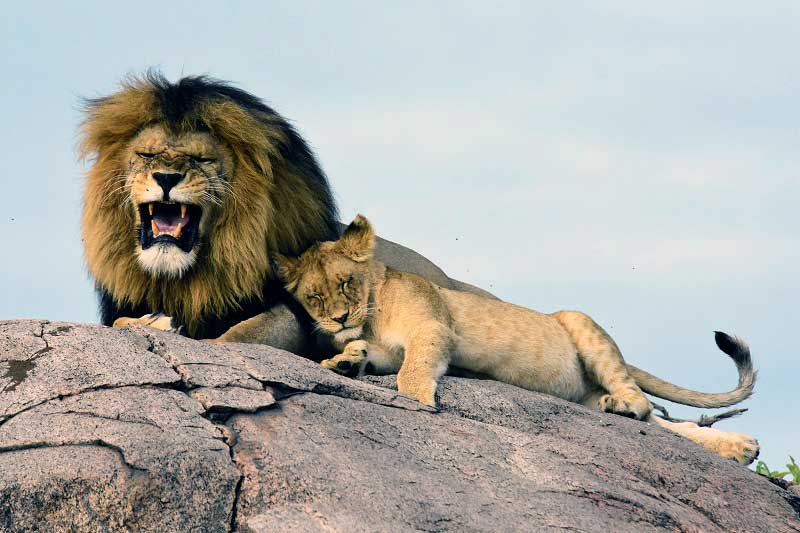
During her many trips to East Africa on safaris, one of the things Malissa enjoys most is spending time around the amazing geological features know as kopjes– an Afrikaans term referring to relatively small, isolated rock hills that rise abruptly from the surrounding, flat savannah or plain. There are several places in the vast Serengeti landscape where these impressive rock monoliths can be found. Kopjes are formed when softer volcanic rock and ash that comprise the soils of the Serengeti region erode to expose the underlying layer of ancient granite that forced its way upwards from below the earth’s crust during the Precambrian Era, which is at least 540 million years ago. As the soil and other softer metamorphic rocks gradually wore away, the harder granite layer was exposed, forming kopjes. The top of the granite layer is often round in shape and typically cracks due to exposure to the hot African sun, forming holes and crevices of various sizes and shapes.
Kopjes are very different from the surrounding habitat and offer unique environments for both plants and animals. Many species of plants that cannot grow on the vast Serengeti grasslands only grow on the kopjes, and this, in turn provides a unique habitat for a vast array of wild animals, ranging from insects to reptiles to birds to mammals. Some of the more interesting denizens of these special habitats include the klipspringer, a unique, small antelope, especially adapted for climbing; the rock hyrax, a rabbit-sized, rodent-like mammal that is actually more closely related to elephants; and the rock agama, a lizard that can be seen basking on warm days. The colorful red and blue male agamas often perform pushups, which is part of their territorial courtship display. Large cats, such as lions, leopards and cheetah, often use kopjes to hide their young, and also favor the high vantage points they offer to scan the area for both competitors and prey. These areas also offer protection from grass fires and are sources of rain water that gathers in the holes, cracks and crevices in the rocks. These amazing habitats are truly unique “island” ecosystems, and, not surprisingly, have also attracted humans. One place Malissa typically visits during her African safaris is the famous Maasai Kopjes just southwest of the Serengeti Visitor Center. This is the location of a well-known Maasai initiation site, where young men made their transition into adulthood through ritual instruction from tribal elders. Many colorful rock paintings adorn the wall of a small cave, which can be easily reached on foot. Let World Safaris and Safari Professionals help show you the natural wonders of East Africa.



